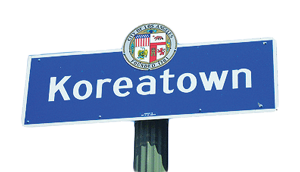As Wilshire Boulevard wends its way through the city — from the Pacific Ocean to Downtown Los Angeles — the thoroughfare is dotted with the landmarks of the neighborhoods it connects. The stretch that passes through Koreatown is a landlocked patch about three miles west of DTLA, with mostly commercial properties lining the boulevard.
“K-Town,” as it’s called, is a rapidly gentrifying L.A. submarket that has appeared on many developers’ radars. Rob McRitchie, vice president of development and asset strategy at JLL, said the area is attracting a diverse mix of real estate investors. “People are always looking for the next deal,” he said.
Indeed, the newly trendy neighborhood is already in spillover mode, with investors looking east to the next deal: the section of town around Wilshire Boulevard between Koreatown and DTLA known as Westlake.
Although Jamison Services, the real estate firm founded by Dr. David Lee, is K-Town’s reigning office landlord — and has begun venturing into multifamily real estate — the neighborhood has some other large players.
Los Angeles-based Lion Real Estate Group has been in Koreatown for nearly a decade “because of the density, because of the historically high occupancy rate,” said Jeffrey Weller, Lion’s managing principal. “We wanted urban core properties for investors buying for long-term appreciation.”
After scouting the neighborhood, Lion closed on its first Koreatown property in 2007, and has produced solid returns for investors since. Weller and his partners now have six buildings with “great tenants” at 100 percent occupancy, but they are also hunting the periphery of the area for new opportunities, he said, because “Koreatown has become so expensive.”
CoStar Senior Market Analyst Stephen Basham said the industry anticipated this progression. “With Koreatown,” he said, “there are several years where it’s been the ‘Next Big Thing.’”
The capital infusion into K-Town dates to the 1990s, when a Metro station opened at the neighborhood nerve center of Wilshire Boulevard and Vermont Avenue. Then a 1999 ordinance revised the city’s zoning approval process to be more favorable to older buildings.

Two modern mixed-use developments over the Metro station followed in 2007 and 2014, but were mostly stand-alone projects among the shabby-but-tenable residential inventory that has long typified Koreatown.
Now Weller and the value-add developers are moving on to Westlake. What’s left to do in Koreatown is install the glossies. And developers are going full throttle.
Los Angeles-based Century West Partners plans to deliver its Next on Sixth mixed-use development at 6th Street and Virgil Avenue in 2017.
The 398-unit building, designed by Santa Monica-based KFA — the same firm that designed the Ace Hotel and the Arts District’s incoming SoHo House — will offer bicycle lockers, a yoga studio, screening room, indoor golf range, private massage room, party room, fitness center, pool, landscaped courtyard and sundeck.
“We noticed there were no real Class A amenitized buildings in Koreatown, even though it’s one of the most densely populated neighborhoods in the country,” Kevin Farrell, Century West’s chief operating officer, said about why his firm chose the area.
Next on Sixth is one of at least four properties with more than 200 units currently under construction in K-Town, which measures about a mile across.
Some community groups have spoken out against such developments, concerned about their impact on the area’s scale, housing prices, green space and neighborhood character. The Koreatown Immigrant Workers Alliance, for example, wants more say in how the neighborhood is shaped. “We want to see development that serves everyone,” said KIWA Policy Analyst Brady Collins.
Koreatown, as the name implies, has a large portion of Korean-American residents. But it’s actually a diverse neighborhood, with other Asians, Latinos and Anglos among other groups, with a healthy portion of young, new arrivals to L.A. from all over the world.
One of K-town’s attractions is the availability of public transportation. It’s not quite true that L.A. residents are obsessed with their cars — at least not the young professionals who arrive in K-Town, many of whom like the convenience of public transit even if they own cars.
“We were surprised…In the last three years, young professionals have moved into these 1920s buildings,” Lion’s Weller said, referring to developments without parking that have rents that are about the same as those with parking. He credits bikes, ridesharing services and public transit for that preference.
Metro now drops passengers at three nearby stops. By 2023, it plans to add stops in the Mid-Wilshire district to the west — a business district, but also a cultural center with museums, galleries, major media offices, retail and restaurants.
Executives with Los Angeles developer Canfield Development selected a three-property parcel for The Kenmore, a 64-unit residential project being built at 453 South Kenmore Avenue, in part because of the short walking distance to two Metro stations, said Serge Shirikjian, Canfield’s chief financial officer. Even though the project will have two levels of parking, he said that easy access to Metro was “a big amenity.” Even residents with reserved parking like the option of being able to eat and shop without driving, Shirikjian said.
Canfield owns buildings in reliably high-rent Westwood and Silver Lake. But executives also like to scout nascent neighborhoods, Shirikjian said, having made early investments in Mar Vista and the pre-economic revival Hollywood, “when there were still bars on the windows.” He said he first began considering an investment in Koreatown when he started noticing more restaurants and retail in the neighborhood in 2011.
